Numerical Investigation of a Novel Heat Pipe Radiant Floor Heating System with Integrated Phase Change Materials †
Abstract
1. Introduction
2. Research Methodology
- first concrete layer 500 × 500 × 20/10 mm
- PCM layer 500 × 500 × 10 mm
- second concrete layer 500 × 500 × 30 mm
- rectangular heat pipes 10 × 10 mm, 510 mm in length
- two-circular distributors 22 mm in diameter, 500 mm in length.
3. Results and Discussion
4. Conclusions
Conflicts of Interest
Nomenclature
| HP | Heat Pipe |
| PCM | Phase Change Material |
| HPHS | Heat Pipe Heating System |
| PCMHPHS | Phase Change Material integrated Heat Pipe Heating System |
| T | Temperature, [°C] |
References
- Cao, X.; Dai, X.; Liu, J. Building energy-consumption status worldwide and the state-of-the-art technologies for zero-energy buildings during the past decade. Energy Build. 2016, 128, 198–213. [Google Scholar] [CrossRef]
- Akalpler, E.; Shingil, M.E. Statistical reasoning the link between energy demand, CO2 emissions and growth: Evidence from China. Procedia Comput. Sci. 2017, 120, 182–188. [Google Scholar] [CrossRef]
- Fotis, P.; Karkalakos, S.; Asteriou, D. The relationship between energy demand and real GDP growth rate: The role of price asymmetries and spatial externalities within 34 countries across the globe. Energy Econ. 2017, 66, 69–84. [Google Scholar] [CrossRef]
- IEA. Global Energy Review 2020. IEA. Paris. Available online: https://www.iea.org/reports/global-energy-review-2020 (accessed on 7 February 2020).
- Cambeiro, F.P.; Armesto, J.; Bastos, G.; López, J.I.P.; Barbeito, F.P. Economic appraisal of energy efficiency renovations in tertiary buildings. Sustain. Cities Soc. 2019, 47, 101503. [Google Scholar] [CrossRef]
- Belz, K.; Kuznik, F.; Werner, K.F.; Schmidt, T.; Ruck, W. Thermal energy storage systems for heating and hot water in residential buildings. In Advances in Thermal Energy Storage Systems; Woodhead Publishing: Sawston, UK, 2015; pp. 441–465. [Google Scholar]
- Lin, Y.; Jia, Y.; Alva, G.; Fang, G. Review on thermal conductivity enhancement, thermal properties and applications of phase change materials in thermal energy storage. Renew. Sustain. Energy Rev. 2018, 82, 2730–2742. [Google Scholar] [CrossRef]
- Magendran, S.S.; Khan, F.S.A.; Mubarak, N.M.; Vaka, M.; Walvekar, R.; Khalid, M.; Abdullah, E.C.; Nizamuddin, S.; Karri, R.R. Synthesis of organic phase change materials (PCM) for energy storage applications: A review. Nano-Struct. Nano-Obj. 2019, 20, 100399. [Google Scholar] [CrossRef]
- Kong, X.; Wang, L.; Li, H.; Yuan, G.; Yao, C. Experimental study on a novel hybrid system of active composite PCM wall and solar thermal system for clean heating supply in winter. Sol. Energy 2020, 195, 259–270. [Google Scholar] [CrossRef]
- Wang, H.; Lu, W.; Wu, Z.; Zhang, G. Parametric analysis of applying PCM wallboards for energy saving in high-rise lightweight buildings in Shanghai. Renew. Energy 2020, 145, 52–64. [Google Scholar] [CrossRef]
- Rathore, P.K.S.; Shukla, S.K. Potential of macroencapsulated pcm for thermal energy storage in buildings: A comprehensive review. Constr. Build. Mater. 2019, 225, 723–744. [Google Scholar] [CrossRef]
- Pirasaci, T. Investigation of phase state and heat storage form of the phase change material (PCM) layer integrated into the exterior walls of the residential-apartment during heating season. Energy 2020, 207, 118176. [Google Scholar] [CrossRef]
- Bejan, A.S.; Catalina, T. The implementation of Phase Changing Materials in energy-efficient buildings. Case Study: EFdeN Project. Energy Procedia 2016, 85, 52–59. [Google Scholar] [CrossRef]
- Li, S.; Zou, K.; Sun, G.; Zhang, X. Simulation research on the dynamic thermal performance of a novel triple-glazed window filled with PCM. Sustain. Cities Soc. 2018, 40, 266–273. [Google Scholar] [CrossRef]
- Hu, Y.; Heiselberg, P.K. A new ventilated window with PCM heat exchanger—Performance analysis and design optimization. Energy Build. 2018, 169, 185–194. [Google Scholar] [CrossRef]
- Weinläder, H.; Klinker, F.; Yasin, M. PCM cooling ceilings in the Energy Efficiency Center—Regeneration behaviour of two different system designs. Energy Build. 2017, 156, 70–77. [Google Scholar] [CrossRef]
- Yasin, M.; Scheidemantel, E.; Klinker, F.; Weinläder, H.; Weismann, S. Generation of a simulation model for chilled PCM ceilings in TRNSYS and validation with real scale building data. J. Build. Eng. 2019, 22, 372–382. [Google Scholar] [CrossRef]
- Yun, B.Y.; Yang, S.; Cho, H.M.; Chang, S.J.; Kim, S. Design and analysis of phase change material based floor heating system for thermal energy storage. Environ. Res. 2019, 173, 480–488. [Google Scholar] [CrossRef]
- Lu, S.; Xu, B.; Tang, X. Experimental study on double pipe PCM floor heating system under different operation strategies. Renew. Energy 2020, 145, 1280–1291. [Google Scholar] [CrossRef]
- Faraj, K.; Faraj, J.; Hachem, F.; Bazzi, H.; Khaled, M.; Castelain, C. Analysis of underfloor electrical heating system integrated with coconut oil-PCM plates. Appl. Therm. Eng. 2019, 158, 113778. [Google Scholar] [CrossRef]
- Guo, J.; Jiang, Y.; Wang, Y.; Zou, B. Thermal storage and thermal management properties of a novel ventilated mortar block integrated with phase change material for floor heating: An experimental study. Energy Convers. Manag. 2020, 205, 112288. [Google Scholar] [CrossRef]
- Mays, A.E.; Ammar, R.; Mahamad, H.; Akroush, M.A.; Hachem, F.; Khaled, M.; Ramadan, M. Using phase change material in under floor heating. Energy Procedia 2017, 119, 806–811. [Google Scholar] [CrossRef]
- Devaux, P.; Farid, M.M. Benefits of PCM underfloor heating with PCM wallboards for space heating in winter. Appl. Energy 2017, 191, 593–602. [Google Scholar] [CrossRef]
- Reay, D.A.; McGlen, R.J.; Kew, P.A. Heat Pipes, Theory, Design and Applications, 6th ed.; Elsevier: Oxford, UK, 2014. [Google Scholar]
- Burlacu, A.; Lăzărescu, C.D.; Ciocan, V.; Verdeș, M.; Balan, M.C.; Şerbănoiu, A.A. CFD Heat Transfer Analysis for Heat Pipes Integration into Buildings with Glazed Façades. Procedia Eng. 2017, 181, 658–665. [Google Scholar] [CrossRef]
- Burlacu, A.; Sosoi, G.; Vizitiu, R.Ș.; Bărbuță, M.; Lăzărescu, C.D.; Ciocan, V.; Șerbănoiu, A.A. Energy efficient heat pipe heat exchanger for waste heat recovery in buildings. Procedia Manuf. 2018, 22, 714–721. [Google Scholar] [CrossRef]
- PCM RT-LINE. Wide-Ranging Organic PCM for Your Application. Available online: https://www.rubitherm.eu/en/index.php/productcategory/organische-pcm-rt (accessed on 7 February 2020).


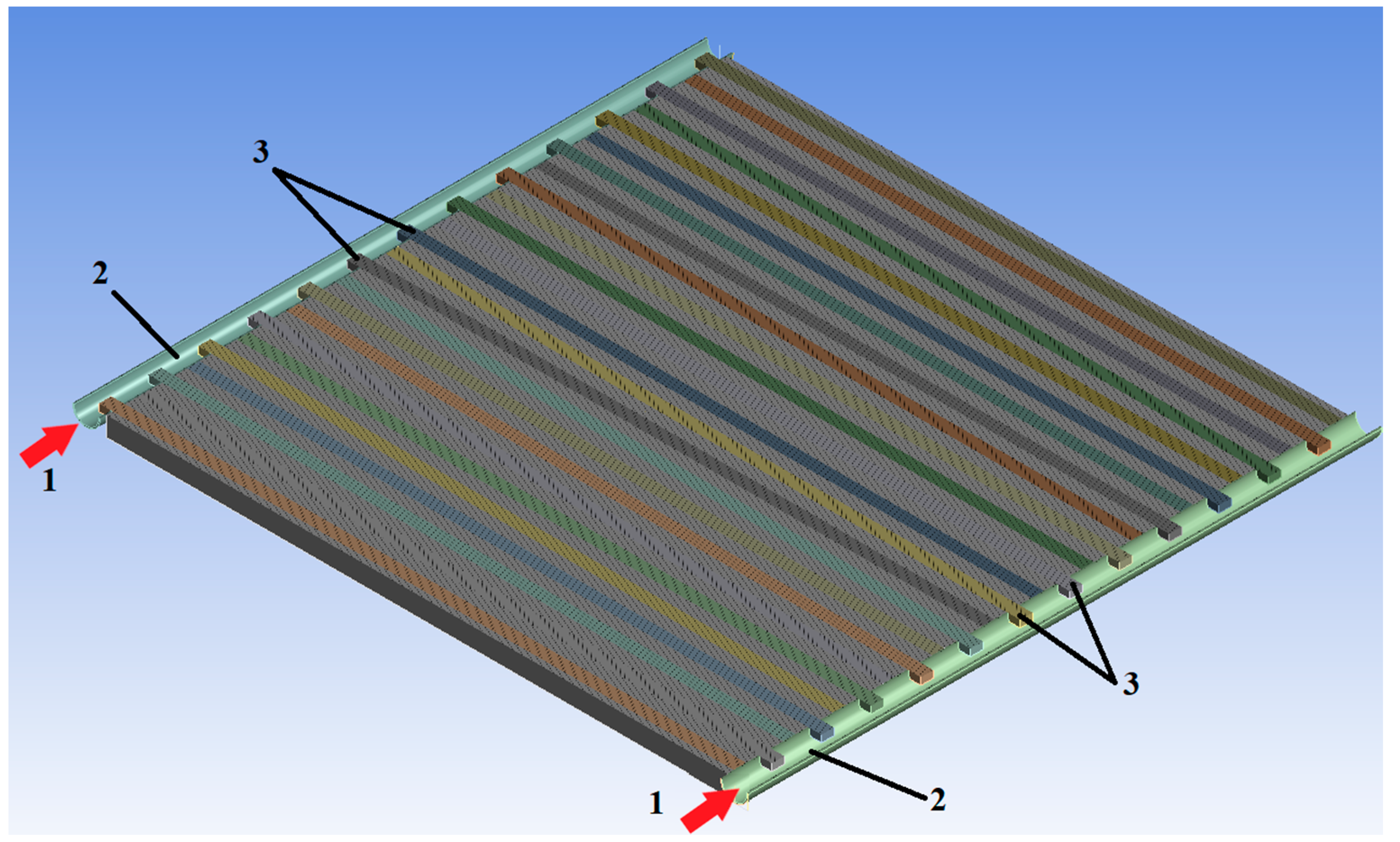
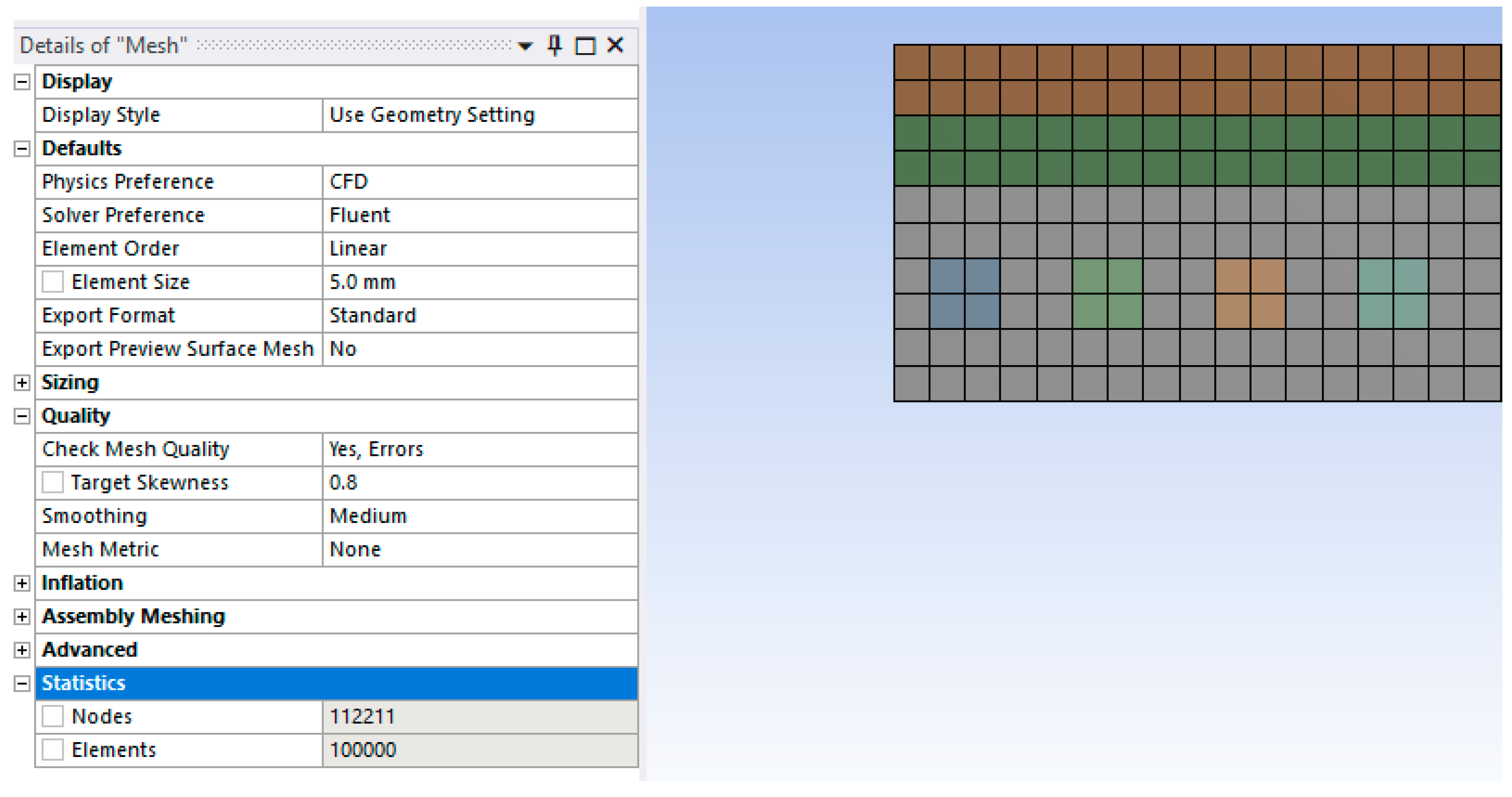




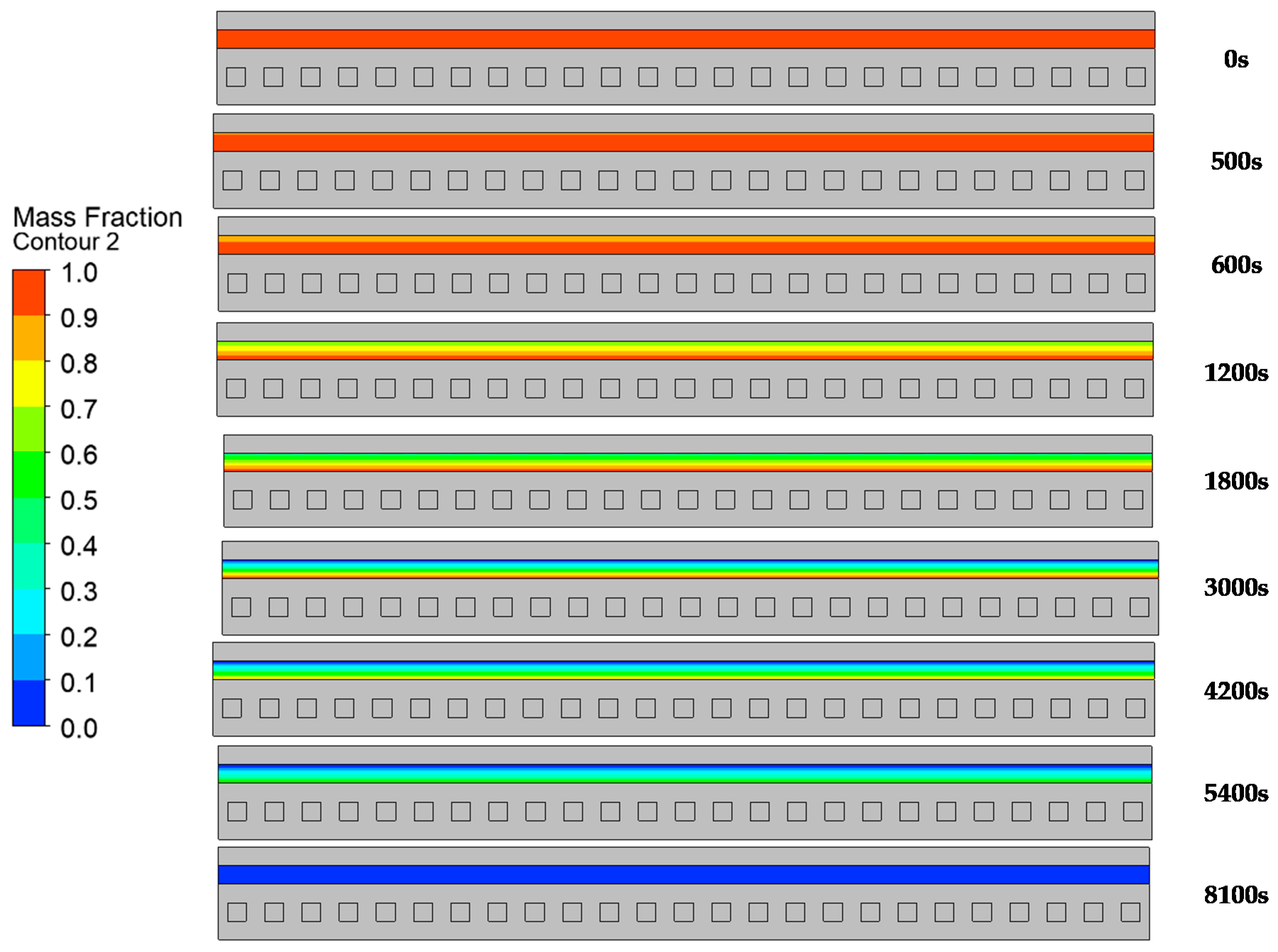
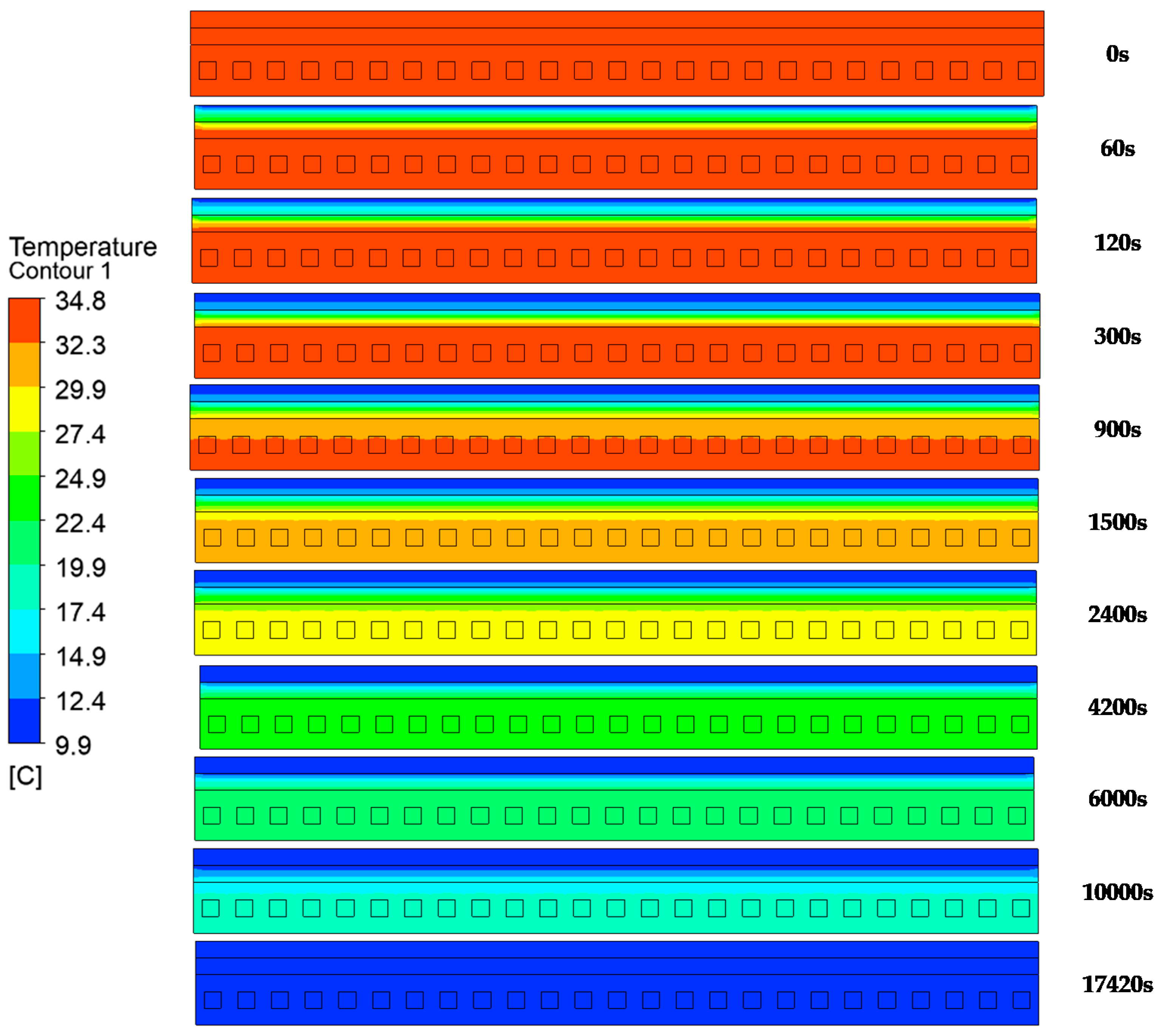
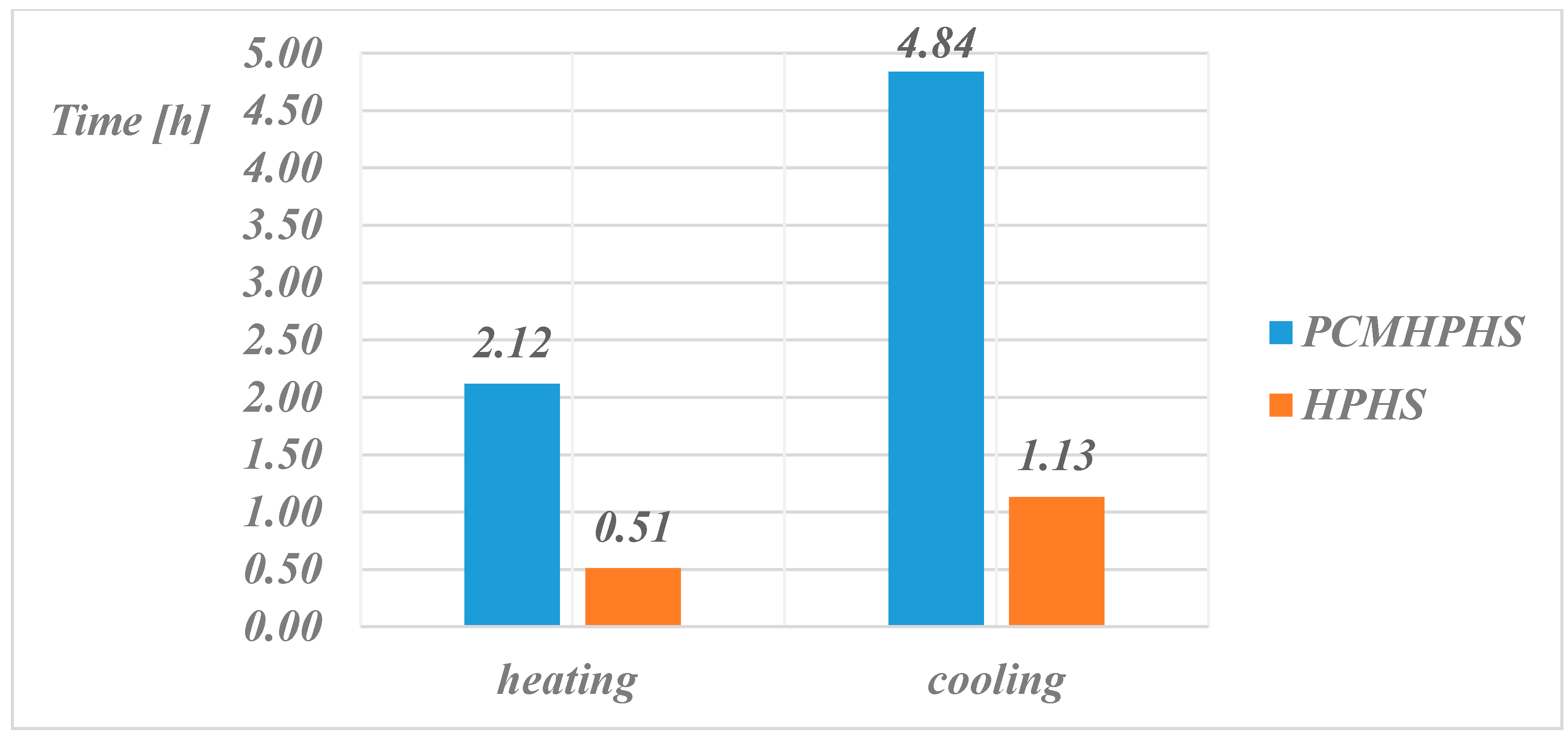
| Characteristics | Value | Units |
|---|---|---|
| Melting area | 20–23 | [°C] |
| Solidification area | 19–21 | [°C] |
| Heat storage capacity | 190 | [kJ/kg] |
| Specific heat capacity | 2 | [kJ/kg·K] |
| Density solid (at 15 °C) | 0.88 | [kg/L] |
| Density liquid (at 25 °C) | 0.77 | [kg/L] |
| Heat conductivity | 0.2 | [W/(m·K)] |
| Max. operation temperature | 45 | [°C] |
Publisher’s Note: MDPI stays neutral with regard to jurisdictional claims in published maps and institutional affiliations. |
© 2020 by the authors. Licensee MDPI, Basel, Switzerland. This article is an open access article distributed under the terms and conditions of the Creative Commons Attribution (CC BY) license (http://creativecommons.org/licenses/by/4.0/).
Share and Cite
Brănoaea, M.; Burlacu, A.; Ciocan, V.; Verdeș, M.; Vizitiu, R.Ș. Numerical Investigation of a Novel Heat Pipe Radiant Floor Heating System with Integrated Phase Change Materials. Proceedings 2020, 63, 15. https://doi.org/10.3390/proceedings2020063015
Brănoaea M, Burlacu A, Ciocan V, Verdeș M, Vizitiu RȘ. Numerical Investigation of a Novel Heat Pipe Radiant Floor Heating System with Integrated Phase Change Materials. Proceedings. 2020; 63(1):15. https://doi.org/10.3390/proceedings2020063015
Chicago/Turabian StyleBrănoaea, Marius, Andrei Burlacu, Vasilică Ciocan, Marina Verdeș, and Robert Ștefan Vizitiu. 2020. "Numerical Investigation of a Novel Heat Pipe Radiant Floor Heating System with Integrated Phase Change Materials" Proceedings 63, no. 1: 15. https://doi.org/10.3390/proceedings2020063015
APA StyleBrănoaea, M., Burlacu, A., Ciocan, V., Verdeș, M., & Vizitiu, R. Ș. (2020). Numerical Investigation of a Novel Heat Pipe Radiant Floor Heating System with Integrated Phase Change Materials. Proceedings, 63(1), 15. https://doi.org/10.3390/proceedings2020063015





